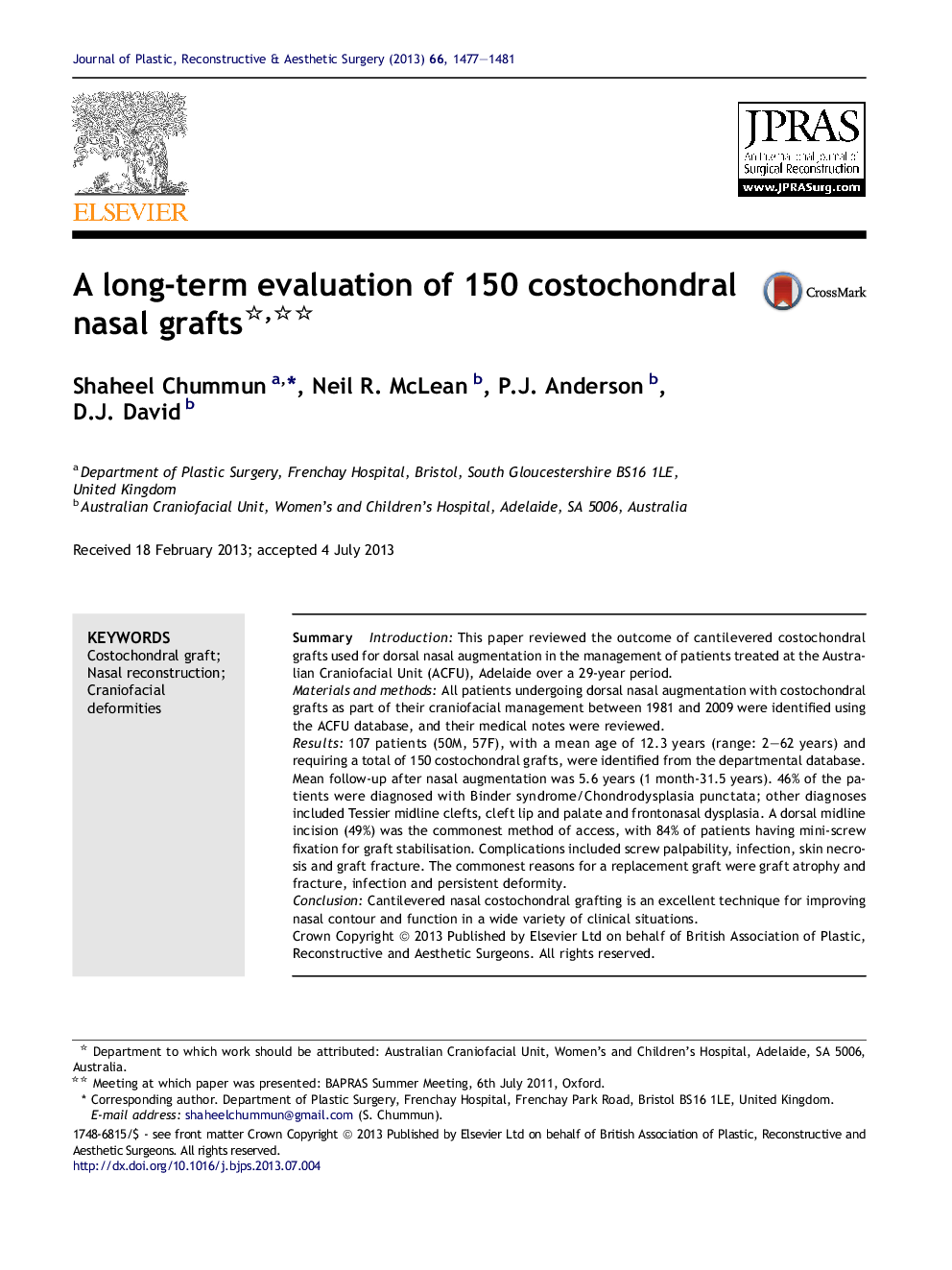| Article ID | Journal | Published Year | Pages | File Type |
|---|---|---|---|---|
| 4117386 | Journal of Plastic, Reconstructive & Aesthetic Surgery | 2013 | 5 Pages |
SummaryIntroductionThis paper reviewed the outcome of cantilevered costochondral grafts used for dorsal nasal augmentation in the management of patients treated at the Australian Craniofacial Unit (ACFU), Adelaide over a 29-year period.Materials and methodsAll patients undergoing dorsal nasal augmentation with costochondral grafts as part of their craniofacial management between 1981 and 2009 were identified using the ACFU database, and their medical notes were reviewed.Results107 patients (50M, 57F), with a mean age of 12.3 years (range: 2–62 years) and requiring a total of 150 costochondral grafts, were identified from the departmental database. Mean follow-up after nasal augmentation was 5.6 years (1 month-31.5 years). 46% of the patients were diagnosed with Binder syndrome/Chondrodysplasia punctata; other diagnoses included Tessier midline clefts, cleft lip and palate and frontonasal dysplasia. A dorsal midline incision (49%) was the commonest method of access, with 84% of patients having mini-screw fixation for graft stabilisation. Complications included screw palpability, infection, skin necrosis and graft fracture. The commonest reasons for a replacement graft were graft atrophy and fracture, infection and persistent deformity.ConclusionCantilevered nasal costochondral grafting is an excellent technique for improving nasal contour and function in a wide variety of clinical situations.
